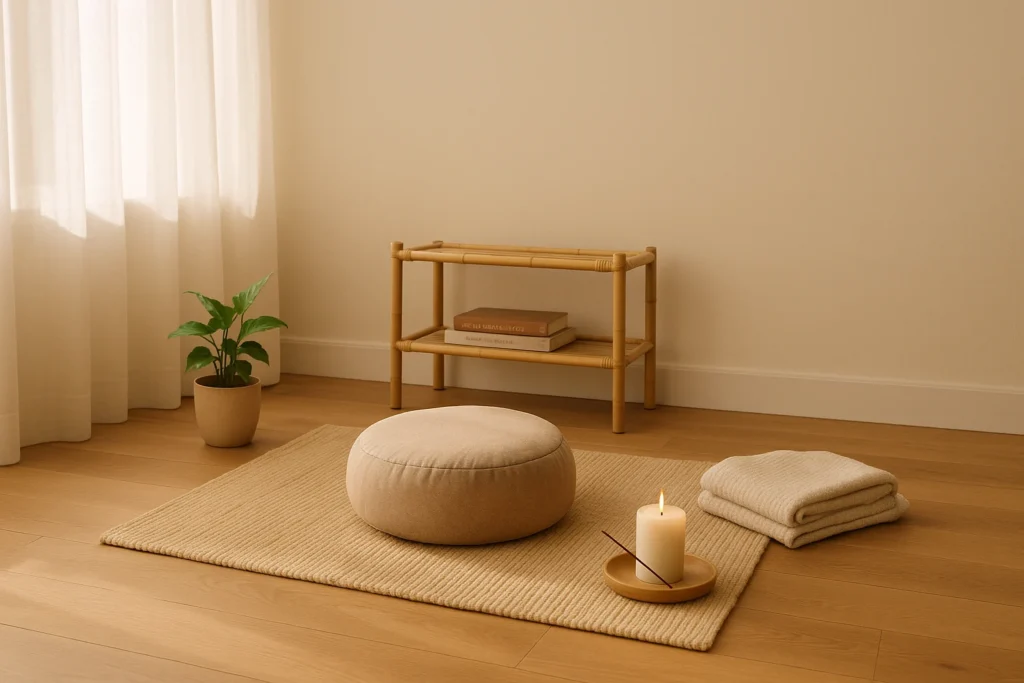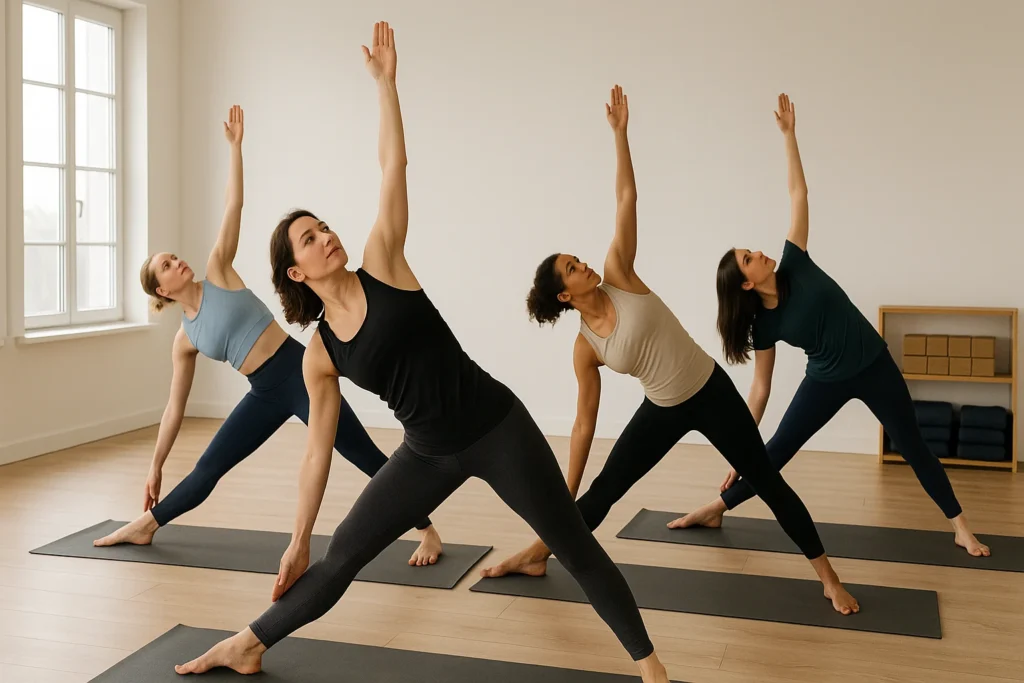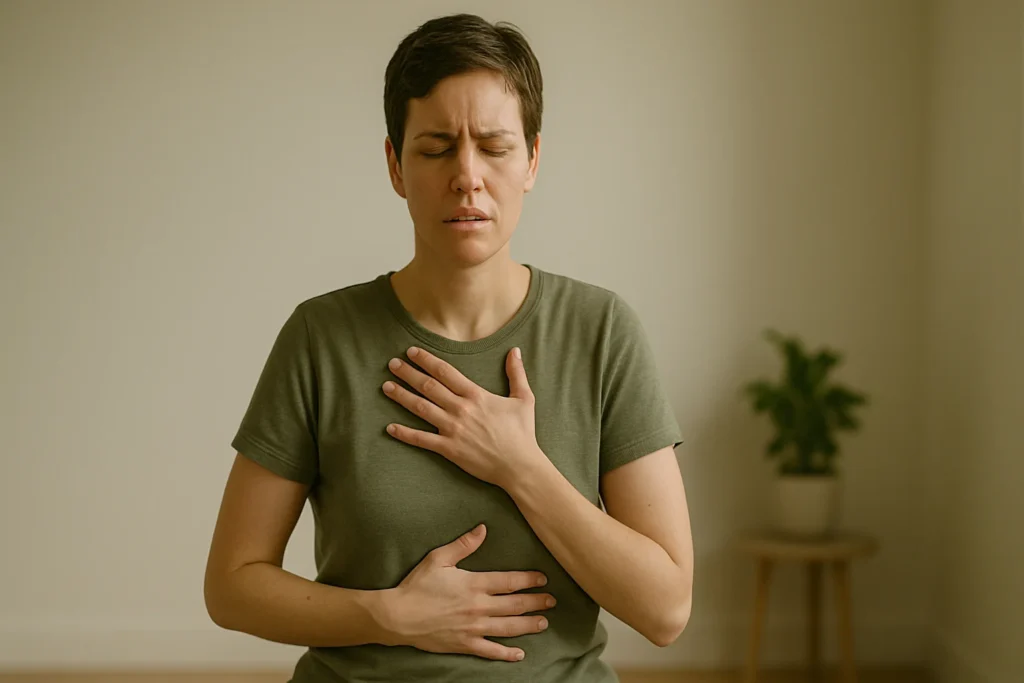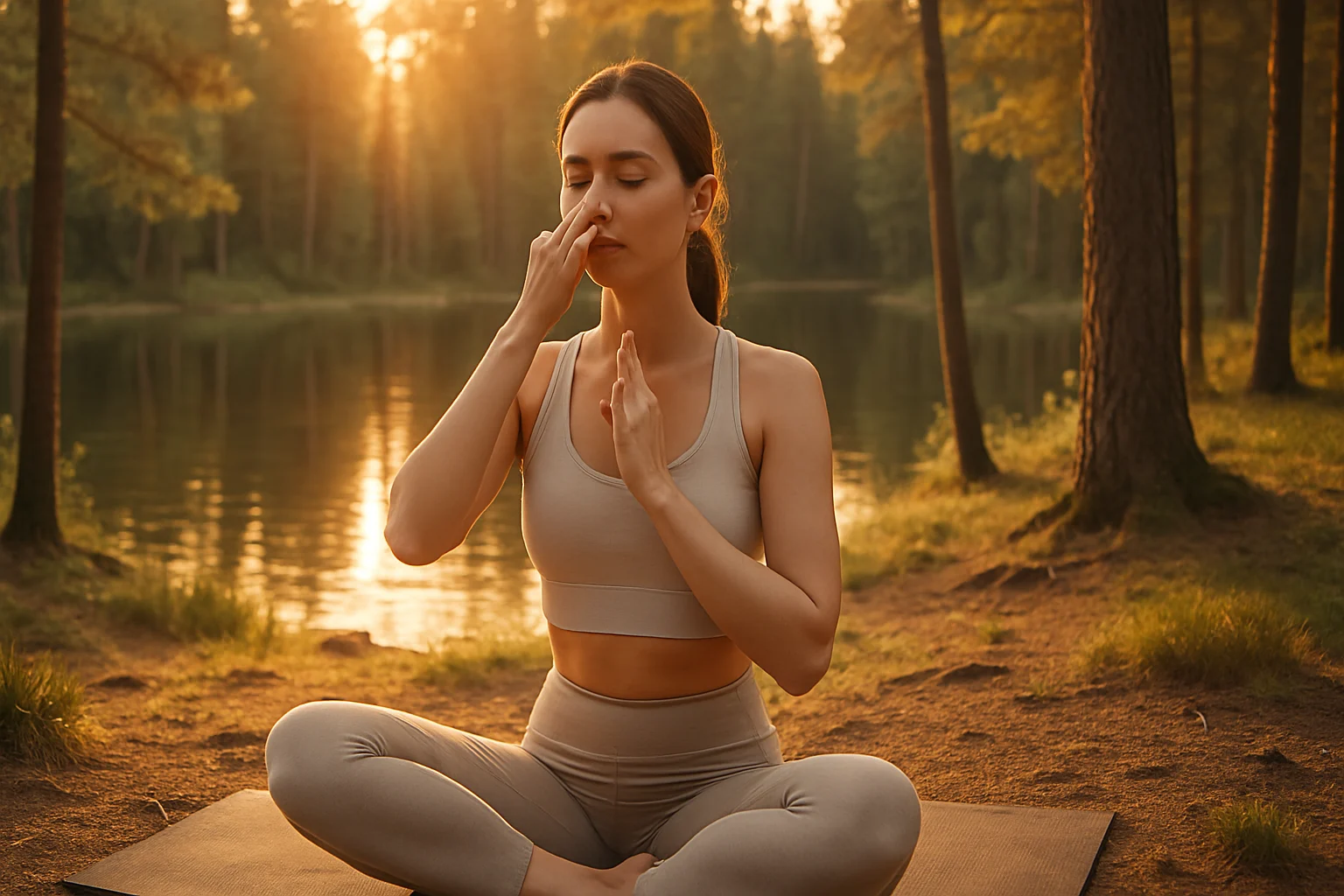
Heart racing? Mind spiraling? Anxiety feels intense, but beginner breathwork anxiety techniques may help you feel calmer within about 5 minutes. This 2025 guide, informed by current research, offers simple calming breath exercises for beginners—no yoga, no hassle. For those starting with breathwork, it’s a powerful entry point into broader practices of mindfulness stress relief. Breathe your way to peace today!
Assess Your Breath Now!Table of Contents
- Key Takeaways for Starting Out
- What is Breathwork for Anxiety?
- Why Breathwork Eases Anxiety
- Getting Started: Breathing Basics
- Techniques You Can Try
- Make It a Daily Routine
- Helpful Tools & Apps
- Self-Check: Breath Patterns
- Common Mistakes to Avoid
- When to Seek Professional Support
- Frequently Asked Questions
- What’s New in 2025
Key Takeaways for Beginner Breathwork Anxiety Relief
- Breathwork can be a quick, effective tool for beginners to help manage anxiety symptoms.
- Techniques like 4-7-8, 5-5-5, and alternate nostril breathing may help calm nerves during spikes of worry.
- Practice these techniques about 5 minutes daily to build benefits over time.
- Tools like apps or timers can enhance calming breathing techniques, but aren’t required.
- Breathwork may help shift your nervous system toward calm, which can reduce feelings of anxiety.
What is Breathwork for Anxiety?
Breathwork involves consciously guiding your breath to ease anxiety. It’s about gently changing how you breathe to find calm. For beginners, simple anxiety breathing techniques focus on everyday signs like racing thoughts, a pounding heart, or sweaty palms. Slower, deliberate breaths can help your body ease from fight-or-flight toward rest-and-digest—a steady, natural way to ride out panic or social nerves. If you’re exploring holistic relaxation, you can also browse our yoga retreats in Todos Santos, Mexico.
“Breath is the bridge that connects life to consciousness.” — Thich Nhat Hanh
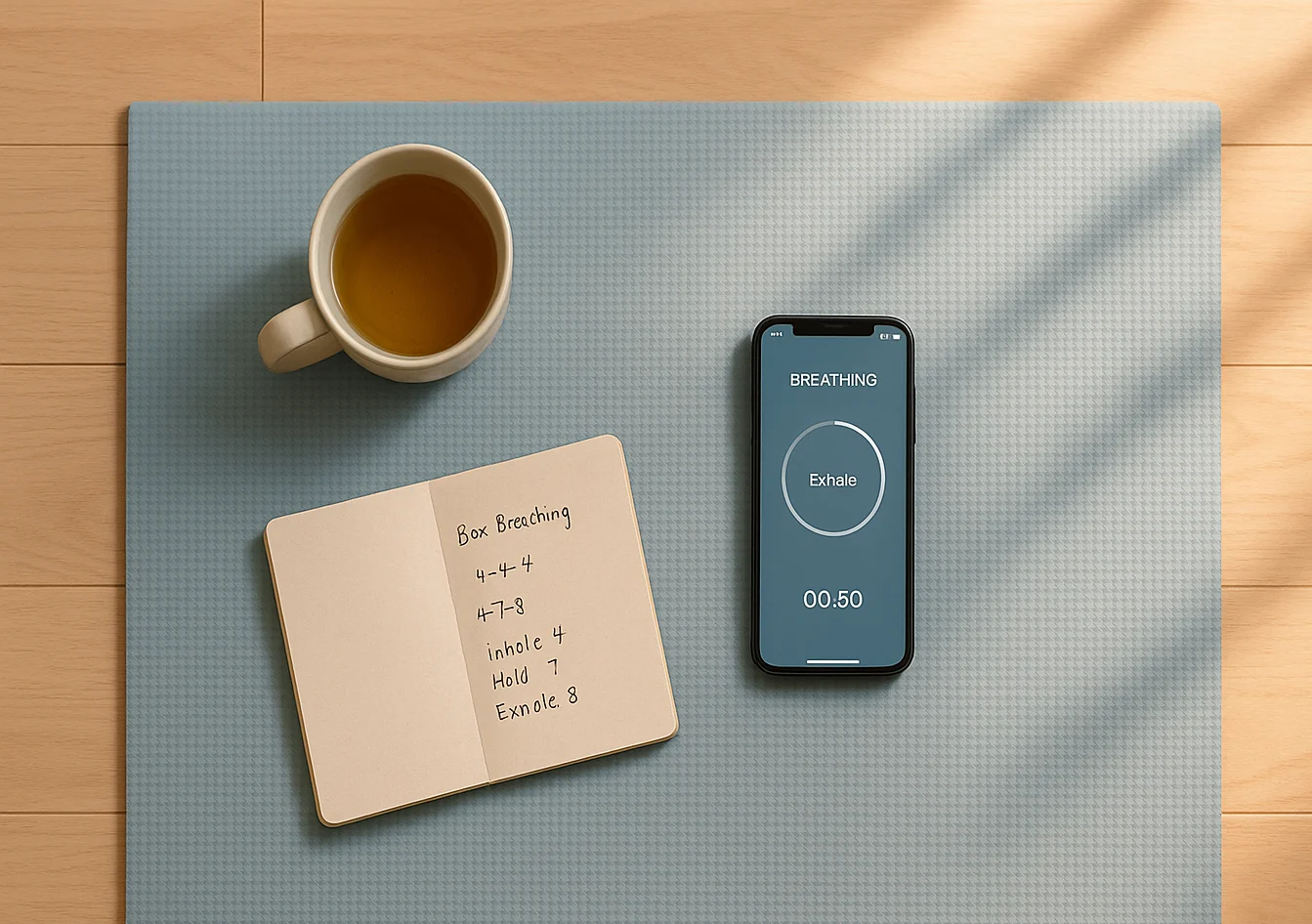
Why Breathwork Eases Anxiety
When anxiety hits, your body goes into overdrive—heart pounding, breaths short, muscles tight, maybe even dizzy. Breathwork for anxious beginners techniques can help you tap the brakes on this response. Here’s why they may help:
- Soothes Your Nerves: Slow breathing may activate your body’s calming response, which can slow heart rate and ease blood pressure.
- Clears Your Mind: Slower, deeper breathing can support a clearer, more focused state of mind.
- Loosens You Up: Paying attention to your breath can help melt away tension in your shoulders or chest.
- Keeps You Grounded: Focusing on breathing pulls you out of spiraling thoughts, anchoring you in the now.
Some research suggests slow breathing engages vagal pathways and may reduce stress markers. For example, a 2017 study reported improvements in attention and reductions in negative affect and cortisol after eight weeks of diaphragmatic breathing (see PMCID: PMC5455070). Whether it’s social anxiety, panic attacks, or ongoing worry, these calming breathing techniques can be a helpful practice for beginners. For a structured approach to mastering these breathing exercises, consider pairing them with mindfulness practices. Need a quick break at work? Try 5-minute desk yoga.
This post has affiliate links. We may earn a commission. Learn more.
Starting Beginner Breathwork Anxiety Practices
Before you dive into breathing exercises, set yourself up for success with a few easy steps:
- Choose a Position: Sit upright or lie down—whatever lets your body soften.
- Minimize Distractions: Close your eyes or soften your gaze on a single point to stay present.
- Start Short: Try 2-3 minutes, increasing to 5-10 as you gain confidence.
- Be Patient: The benefits grow with practice, so take your time.
- Monitor Comfort: Pause if dizzy or lightheaded and rest.
Calming Breath Exercises for Anxiety Relief
These relaxing breath practices are tailored for beginners to ease anxiety fast, ideal for panic attacks, social anxiety, or pre-event nerves. Practice them to build your breathwork for anxiety skills.
1. 4-7-8 Breathing for Anxiety
This technique is commonly used for relaxation and many people find it helpful for anxiety relief through breathwork, especially before speeches or interviews.
How to do it:
- Exhale completely: Empty your lungs through your mouth.
- Inhale: Breathe in through your nose for 4 counts.
- Hold: Hold your breath for 7 counts.
- Exhale: Exhale through your mouth with a “whoosh” for 8 counts.
- Repeat: Complete 4 cycles, increasing to 8 as comfortable.
Benefits: May ease spikes of anxiety, promote sleep, and help slow heart rate.
Why it works: Extended exhales are associated with activation of the parasympathetic nervous system, which may help you feel calmer.
2. 5-5-5 Breathing for Grounding
This simple technique grounds you during anxious moments, like crowded events, great for newcomers to anxiety breathwork.
How to do it:
- Inhale: Breathe in through your nose for 5 counts.
- Hold: Hold for 5 counts.
- Exhale: Exhale through your mouth for 5 counts.
- Repeat: Continue for 3-5 minutes.
Benefits: May ease anxiety, improve focus, and help you feel grounded.
Why it works: The steady count helps your breath find a calm rhythm, which can anchor you when worry spikes.
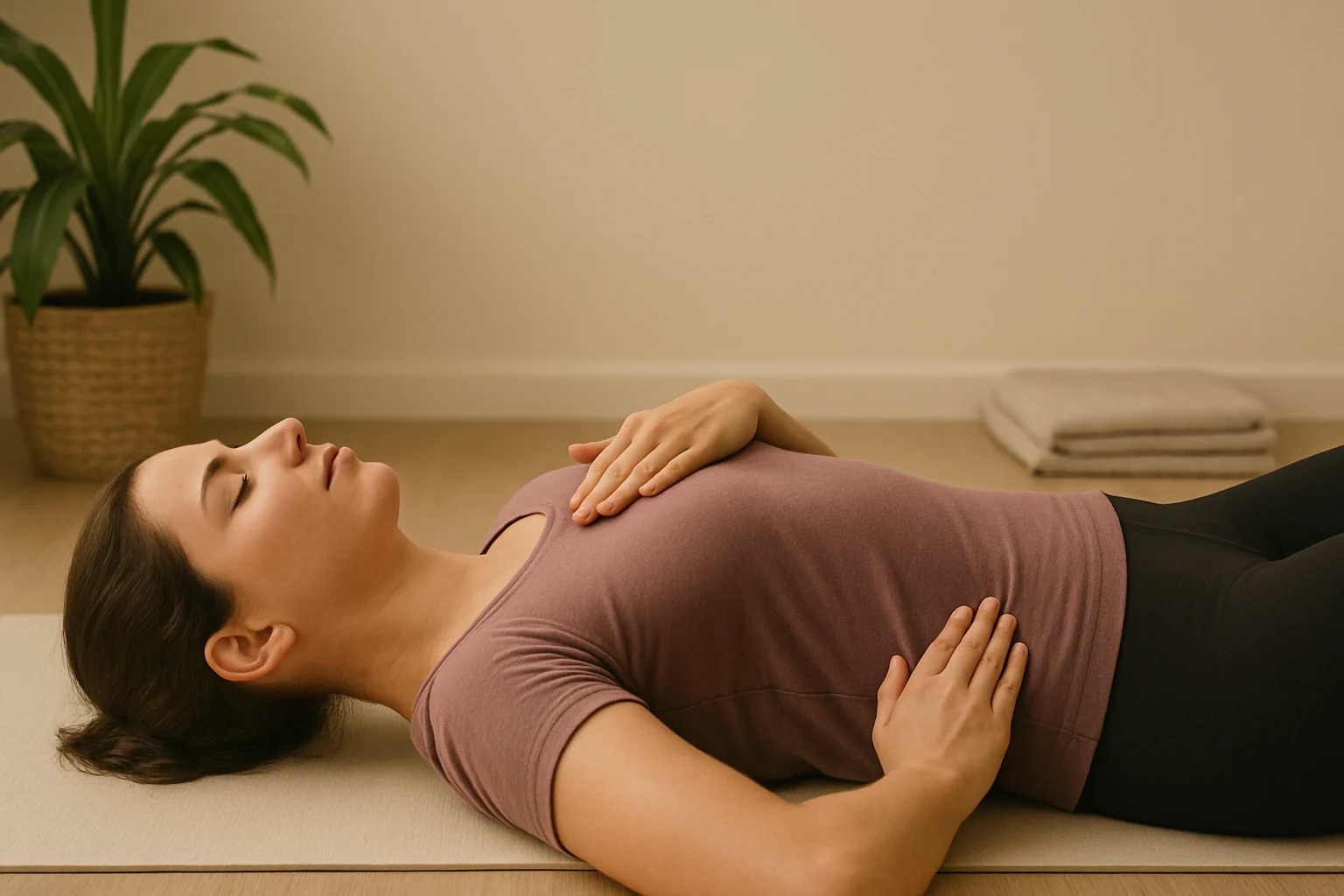
3. Extended Exhale Breathing
This technique soothes anxiety by lengthening exhales, a key calming breath exercise for panic attacks.
How to do it:
- Inhale: Breathe in through your nose for 4 counts.
- Exhale: Exhale slowly through your mouth for 6-8 counts (or longer if comfortable).
- Repeat: Continue for 3-5 minutes.
Benefits: May help calm nerves, reduce panic, and promote relaxation.
Why it works: Longer exhales are associated with vagal activity and may help lower heart rate and ease tension.
4. Resonant Breathing for Calm
This technique syncs breathing to a steady rhythm, ideal for beginners working with anxiety during social moments or pre-meeting jitters.
How to do it:
- Inhale: Breathe in through your nose for 5 counts.
- Exhale: Exhale through your nose for 5 counts.
- Repeat: Aim for 5-6 breaths per minute for 3-5 minutes.
Benefits: May help balance heart rate, ease anxiety, and enhance calm.
Why it works: A steady rhythm may support heart rate variability (HRV), which is associated with emotional balance.
5. Alternate Nostril Breathing for Balance
This calming technique is helpful before high-pressure situations like exams.
How to do it:
- Sit comfortably: Use your right thumb to close your right nostril.
- Inhale: Breathe in through your left nostril for 4 counts.
- Close left nostril: Use your ring finger, hold for 4 counts.
- Exhale: Release right nostril, exhale for 4 counts.
- Repeat: Alternate sides for 3-5 minutes.
Benefits: May reduce anxiety, balance emotions, and improve focus.
Why it works: Alternating nostrils may support a sense of balance and focused attention. Avoid if you have a cold or nasal congestion.
Quick Reference Table of Calming Breath Exercises
| Technique | Inhale Count | Hold Count | Exhale Count | Benefits |
|---|---|---|---|---|
| 4-7-8 Breathing | 4 | 7 | 8 | May ease panic, promote sleep, help slow heart rate |
| 5-5-5 Breathing | 5 | 5 | 5 | May ease anxiety, improve focus, and help you feel grounded |
| Extended Exhale | 4 | N/A | 6-8+ | May calm nerves, reduce panic, promote relaxation |
| Resonant Breathing | 5 | N/A | 5 | May balance heart rate, ease anxiety, enhance calm |
| Alternate Nostril | 4 | 4 | 4 | May reduce anxiety, balance emotions, improve focus |
Daily Anxiety Breathwork Routine
Make your breathwork for anxiety a habit with these tips:
- Set a Time: Practice 5-10 minutes daily, like before bed or after waking.
- Use Triggers: Pair with routines, e.g., after brushing teeth or during a commute.
- Use in Tough Moments: Try 4-7-8 for spikes of anxiety or resonant breathing before meetings.
- Stay Consistent: Daily practice can build lasting calm and resilience.
For a comfy setup, try a meditation cushion under $50.
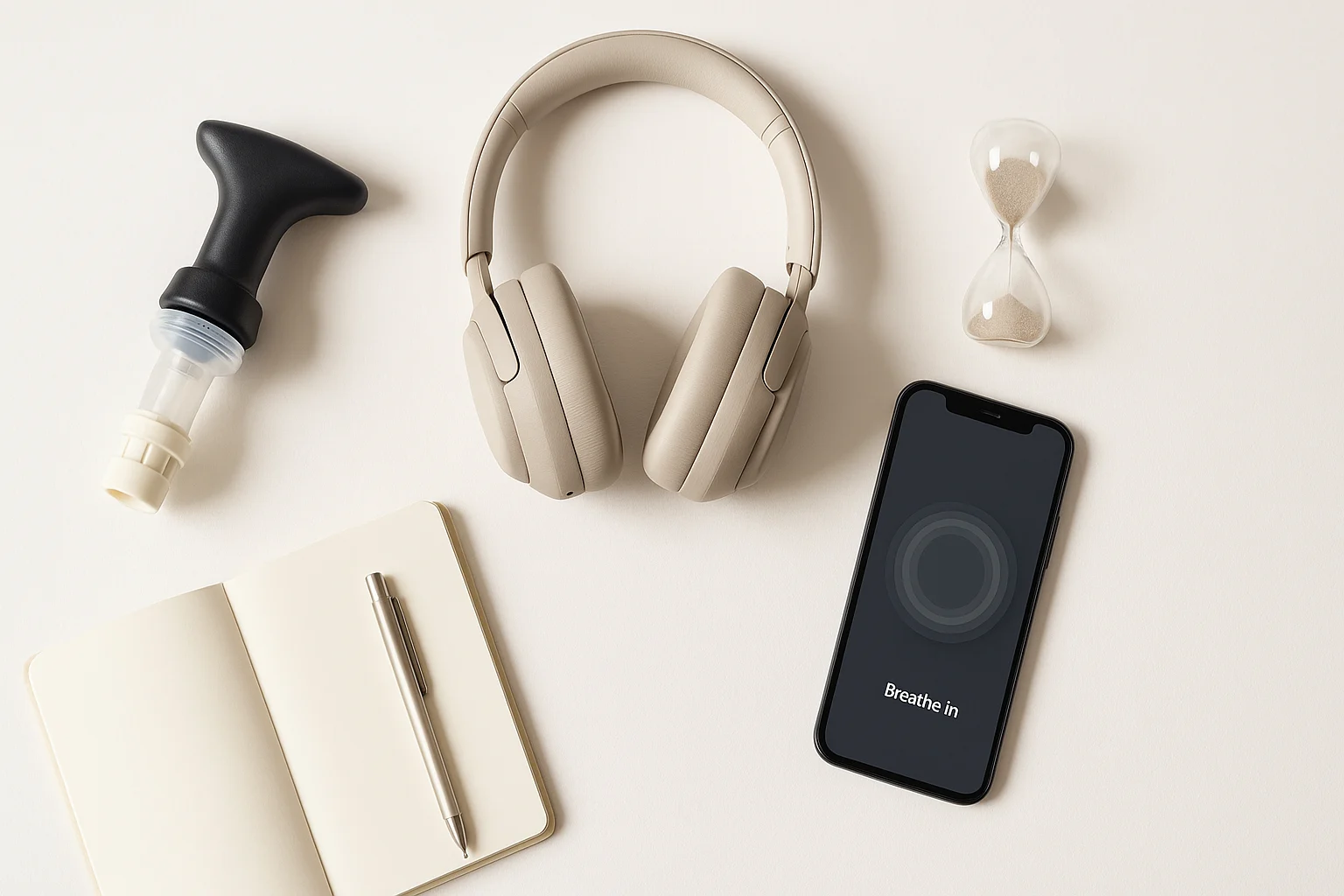
Tools to Boost Your Breathwork
Breathing exercises need no gear, but these tools can enhance your breathwork practice for anxiety:
- Breathing Trainers: Devices like Airofit may help you train breath control for deeper calm.
- Apps: Calm or Breathwrk offer guided anxiety-focused sessions.
- Quiet Space: Create a distraction-free corner for focus.
- Timer: Use a phone timer for consistent 5-10 minute sessions.
Assess Your Breath Regulation
Evaluate your anxiety-focused breathing habits with this tool to tailor your practice.
Common Breathwork Mistakes to Avoid
Steer clear of these pitfalls for effective beginner breathwork anxiety practice:
- Forcing Breaths: Let breaths flow naturally to avoid tension.
- Breathing Too Fast: Slow down to maximize calm.
- Distractions: Choose a quiet space for better focus.
- Giving Up Early: Stick with it, as results build over weeks.
- Ignoring Discomfort: Stop if you feel off and consult a professional.
When to Seek Professional Help for Anxiety
Beginner-friendly breathwork techniques are powerful but not a cure-all. If anxiety feels constant, intense, or disrupts daily life, consult a therapist or doctor for a tailored plan. Breathwork complements therapy or medication but isn’t a substitute. For immersive relaxation, explore yoga retreats in Todos Santos, Mexico.
Frequently Asked Questions
Breathwork Trends for 2025
In 2025, beginner-focused breathwork for anxiety is gaining traction as a supportive option for mental well-being. Ongoing research explores potential benefits for anxiety, PTSD, and depression, with some studies linking slow breathing to lower stress markers. What’s emerging:
- Personalized Apps: Apps that tailor calming breathing techniques to your current stress level.
- Wearables: Devices that nudge your breathing in real time for steadier practice.
- VR Sessions: Immersive sessions that feel like a mini-reset.
Start these beginner-friendly breathwork techniques now to build steady, lasting calm.
